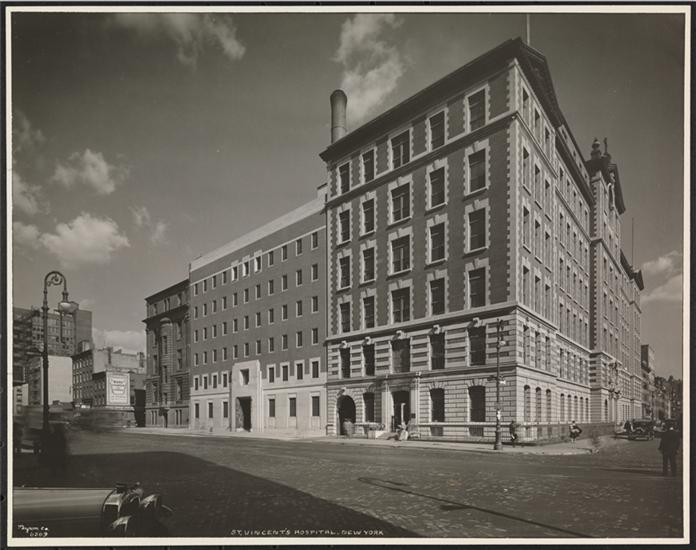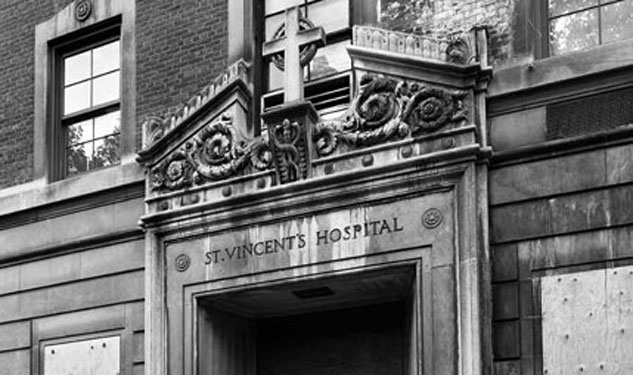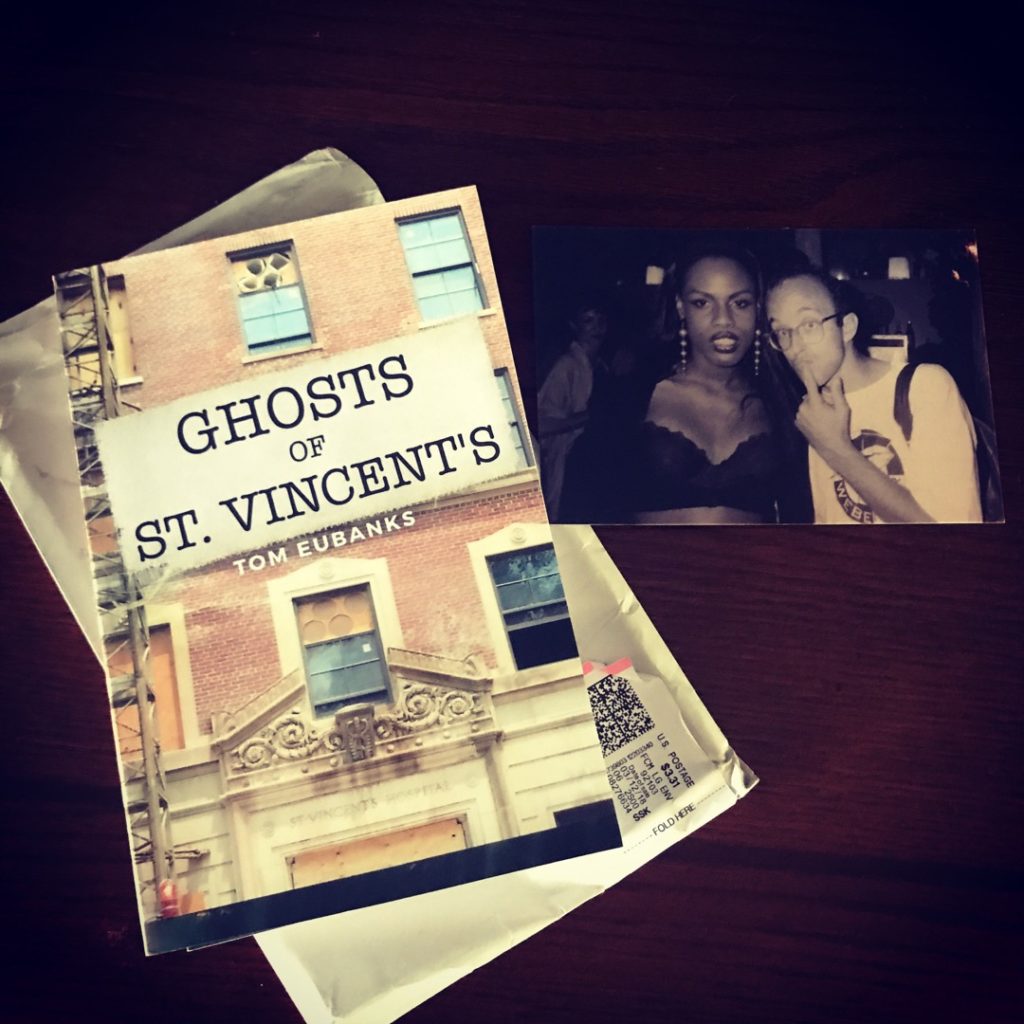

For more than 150 years, St. Vincent’s Hospital served a wide range of New Yorkers, especially in its neighborhood of Greenwich Village, including poets, writers, artists, homeless people, the poor and the working class. It treated victims of the cholera epidemic of 1849 and of the Hudson River landing of US Airways Flight 1549. It was the designated provider for New York and New Jersey members of the U.S. Department of Defense Health Plan. Over time it expanded to become a major medical and research center. It maintained its connection to the Roman Catholic tradition, and was sponsored by the Bishop of Brooklyn and the President of the Sisters of Charity of New York.
20th century
In 1911, St. Vincent’s Ambulance, manned by hospital interns, responded to the Triangle Shirtwaist Factory fire in Manhattan, where the attendants watched helplessly as those trapped in the fire jumped to their deaths onto the street below. In 1912, St. Vincent’s received and treated victims after the sinking of the RMS Titanic, while mourning the loss of attending physician Francis Norman O’Loughlin, who died in the disaster. A plaque honoring his memory stood in the hospital’s main entrance as a reminder of his dedication and sacrifice.
In 1968, under William Grace, Director of Medicine and a chest surgeon at St. Vincent’s, and his associate John A. Chadbourn, the hospital established the nation’s first Mobile Coronary Care Unit (MCCU) following an example in Ireland. It was configured on a white over red 1968 Chevrolet Step-Van and utilized a portable battery-powered defibrillator/monitor; a battery-powered electrocardiograph, I.V. kit, resuscitation/oxygen kit, and a drug kit. The success of the St. Vincent’s MCCU project inspired the development of the “HeartMobile” in Columbus, Ohio, and similar programs in Marietta, Georgia, Montgomery County, Maryland, and Los Angeles in 1970.
In 1975, when the Puerto Rican extremist nationalist group FALN bombed Fraunces Tavern in the Wall Street area, St. Vincent’s paramedics and responders from multiple other EMS agencies transported patients to St. Vincent’s Hospital for trauma care.
In the 1980s, as the gay population of Greenwich Village and New York began succumbing to the AIDS virus, St. Vincent’s established the first AIDS Ward on the East Coast and second only to one in San Francisco, and soon became “Ground Zero” for the AIDS-afflicted in NYC.
On April 30, 2010, the emergency room at St. Vincent’s closed, officially shuttering the hospital after 161 years. Hospital administrators said that the vote to close came after a six-month-long effort to save the financially troubled institution, but August 21, 2011, prosecutors with the Manhattan District Attorney’s Office were reported to have launched an investigation to determine whether administrators intentionally ran St. Vincent’s into the ground….The building was completely demolished by early 2013.
I’ve been wanting to read the book Ghost’s of St. Vincents for a long time. I was blessed to be sent a book by the author! SO THRILLED. I’ve wanted to devour it, but am instead reading it slowly, taking it all in. It is still hard for me to grasp how many beautiful, and many very young souls were lost to AIDS in the beginning ……there is no way to wrap your brain around it. The treatment of these people was/is reprehensible. The tearing of this beautiful building down is a travesty. Another death and actually feels like murder. Reading about that time in history again renews my disgust and feelings of helplessness for the entire situation. The community and those afflicted, those who cared and loved for them, all deserved so much more. The book is written very well. Full of history of the hospital and of Tom’s personal life. It is very insightful and also so much truth, a story that needed to be told.
I will inevitably finish this up this week and I will be sad to let go of the narrative, as it has become a friend of mine as I read it in the quiet with my coffee.
I highly recommend this read!
Peace.




